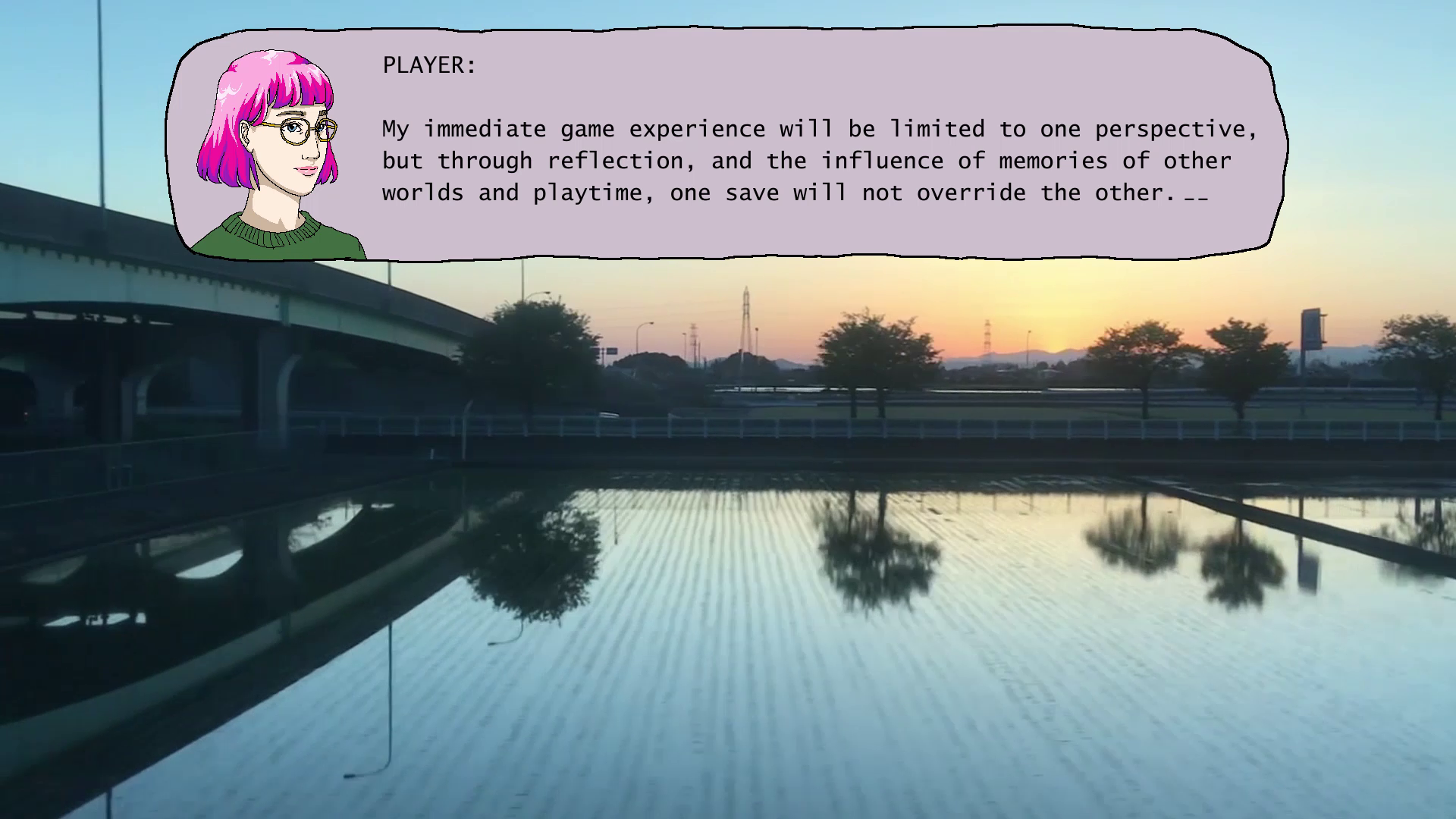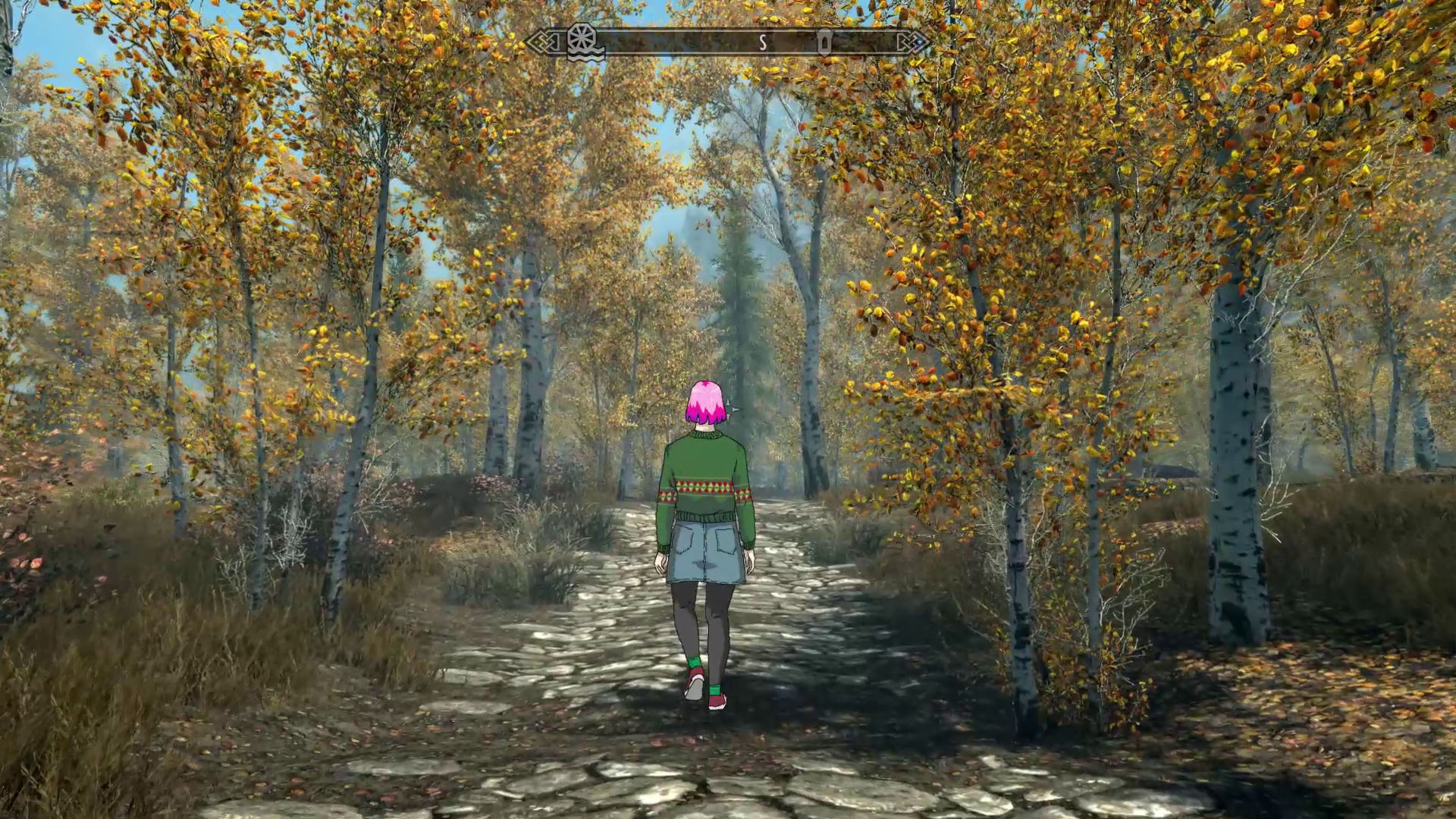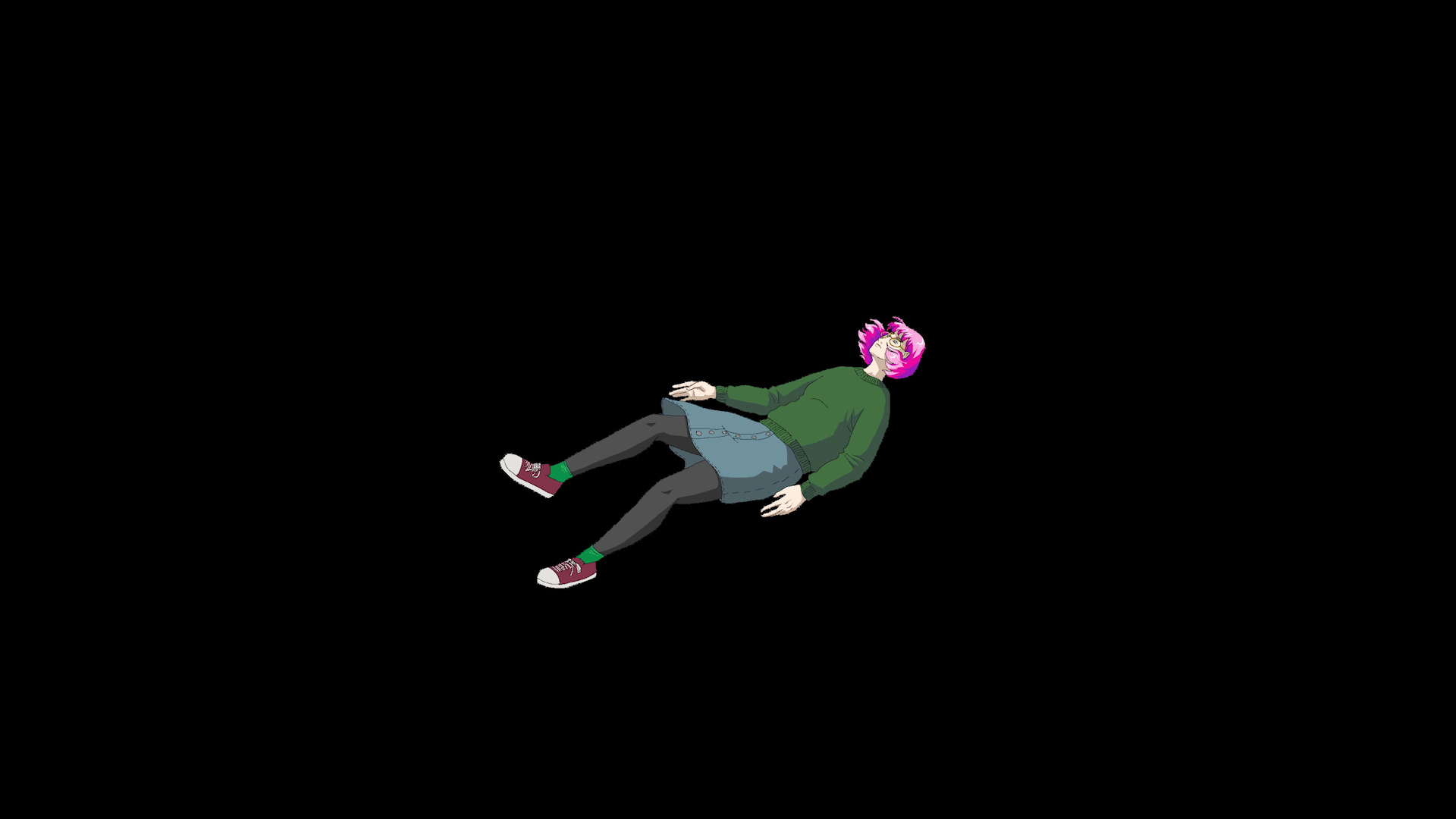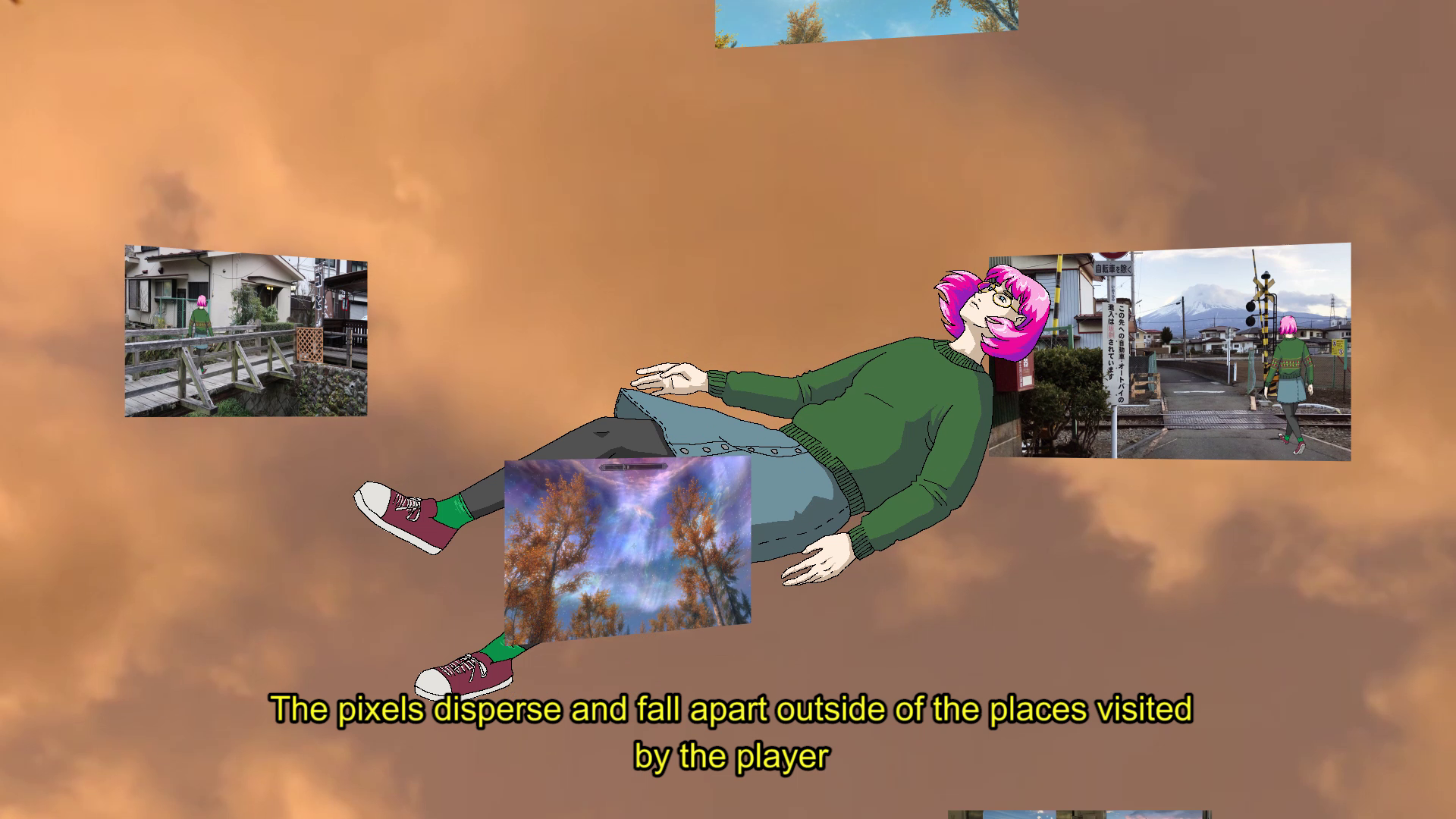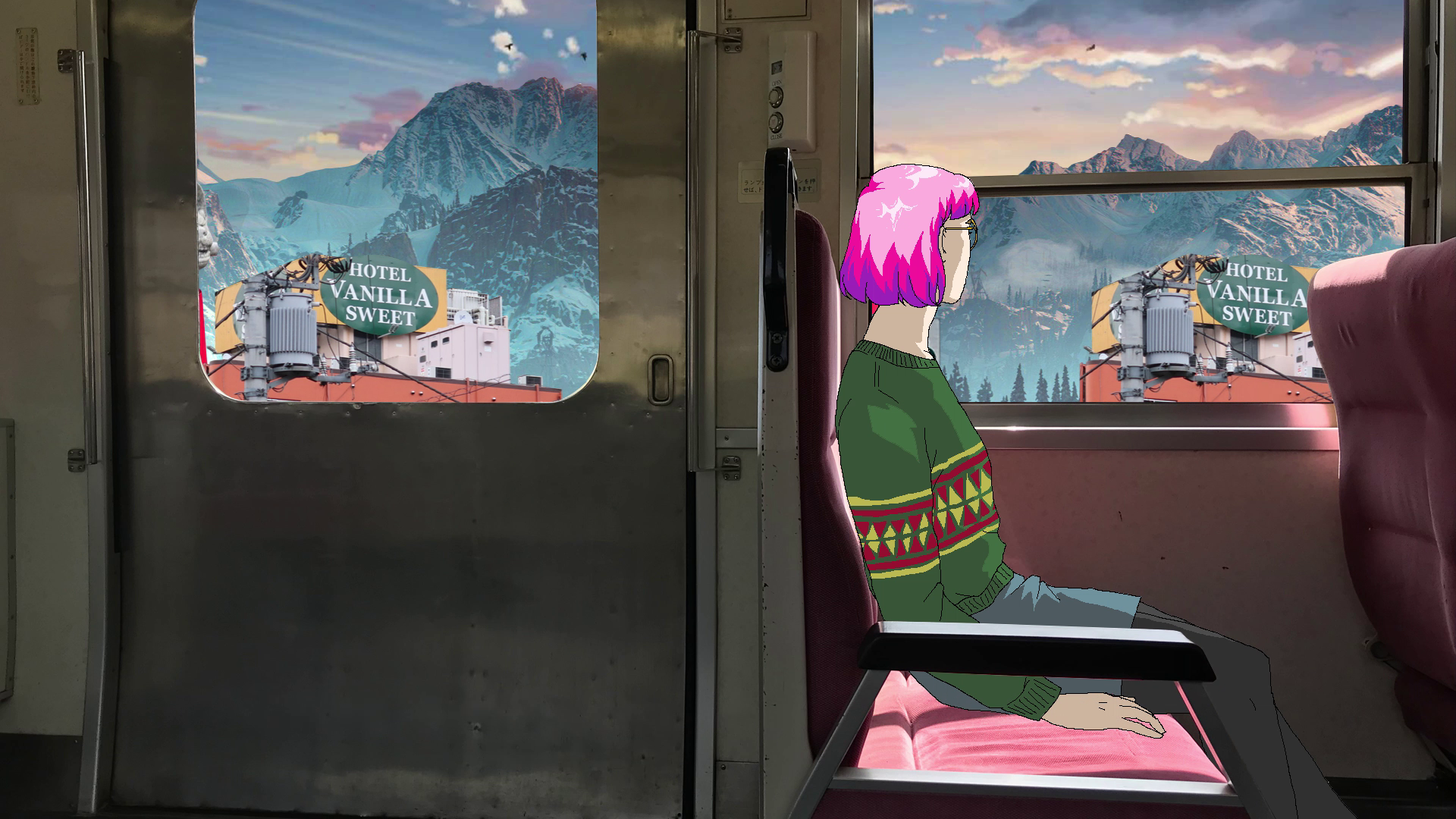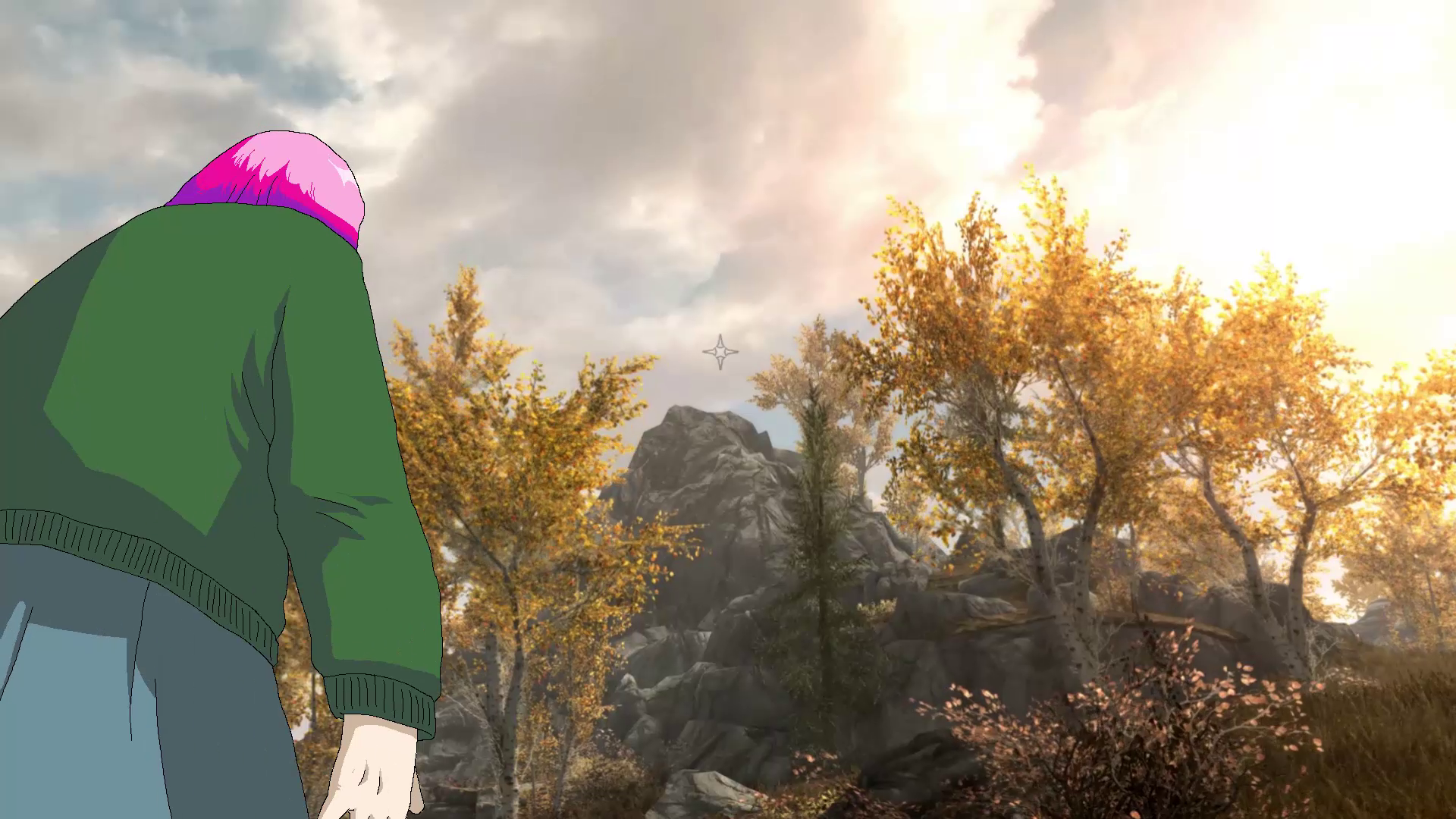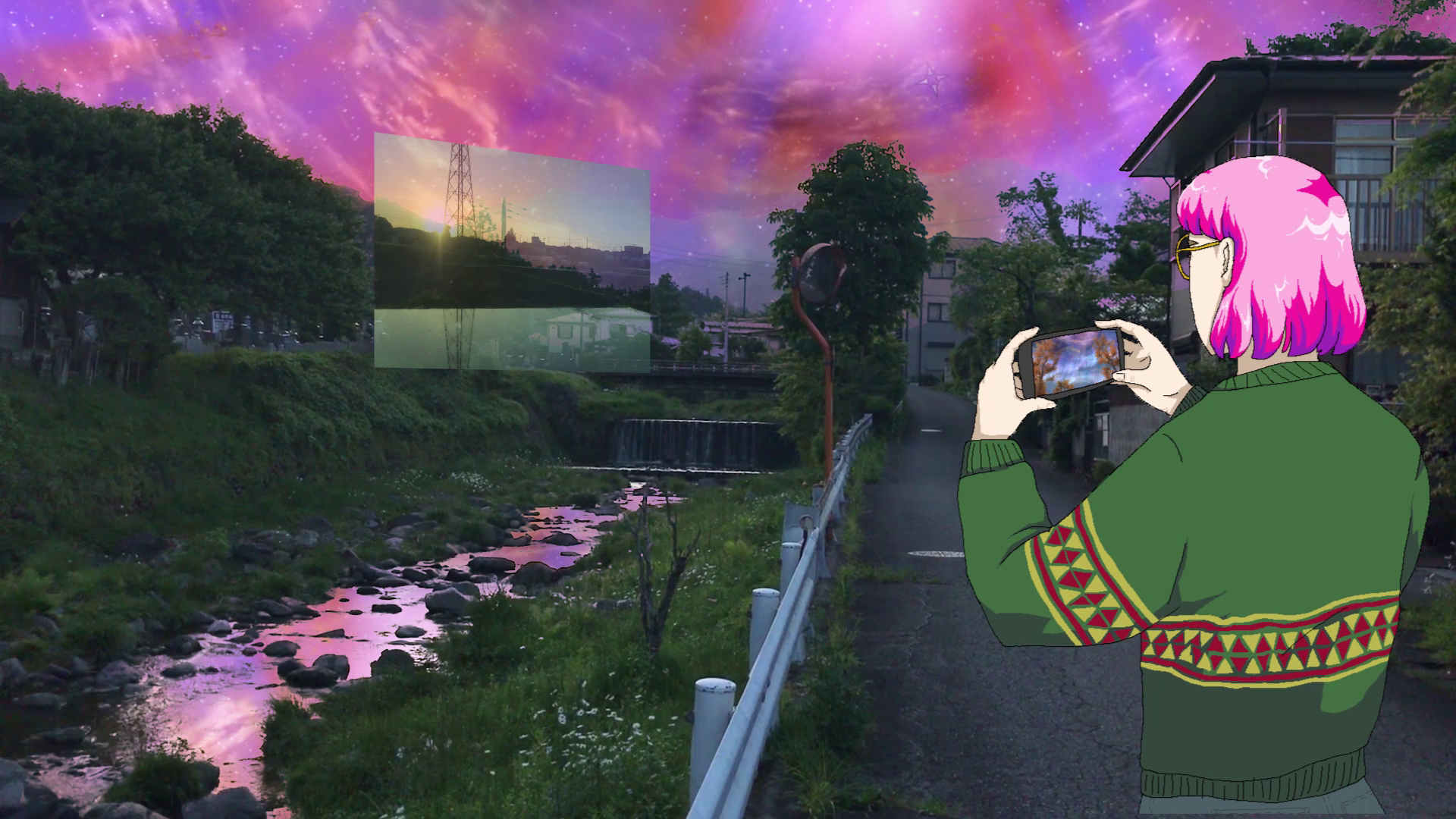Monomyth: gaiden / Return
digital video, color, sound, 12’ 07”, 2020, Hungary
Created by Petra Szemán
Monomyth: gaiden / Return (2019) is the third installment in the ongoing Monomyth: gaiden series (2018-). Structured around the trope of the hero’s journey, it investigates how real life might be experienced as a mediated narrative, focusing on such notions as digital identity, presence, memory, and storytelling. In / Return, the protagonist leaves the Underworld behind and returns to her so-called real life. But is such a reversion possible as the self is inextricably scattered across a network of virtual realms, platforms, and personae? Is narrative closure possible in the age of infinite scrolling?
Born in Budapest, Hungary, Petra Szemán is a moving image artist working with animation and game-like immersive installations. Her practice is centered around instances in which real life can be experienced as fictional. Using a virtual version of herself as a protagonist across various digital realms, she explores liminal spaces and threshold situations, looking to dissect the ways our memories and selves are constructed within a landscape oversaturated with fiction both on- and off-screen. Rejecting the idea of cyberspace as a radically alternative realm, Petra walks the line situated between dystopia and utopia. Petra is a recent Fine Art graduate from Newcastle University (2013-2017) and has exhibited since graduation at NEoN Festival in Dundee, Scotland; Big Screen Southend; BALTIC Centre for Contemporary Art in Gateshead, as well as various galleries across the North East of England. She is currently based in Tsukuba, Japan, developing new work as a recipient of a research scholarship from the Japanese Ministry of Education and Culture (2018-2020).
Gemma Fantacci: How to enter a fictional realm / TUTORIAL was screened at the Milan Machinima Festival in 2019. How did the Monomyth: gaiden series evolve since then? And how many more installments are you planning?
Petra Szemán: As I was starting out with the Monomyth series, I was largely focused on the worlds that arise at the intersections of the real and the fictional. How I could create realms that depict one scene from multiple angles at once, forcing the protagonist (and the viewer) to continuously negotiate between multiple lines of sight. Heading towards the end now, my attention has shifted, and I’m gravitating towards the protagonist/digital avatar herself who inhabits these realms – looking at the different forms of vitality that animated worlds open possibilities for. I’m currently working on the fourth and final part, Master of Two Worlds.
Gemma Fantacci: Monomyth: gaiden / Return seems to suggest that dispersed performances make any understanding of the self increasingly problematic and that authenticity can only be found in moments of suspension, stoppage, postponement, and inactivity, such as the limbo state of the “loading screen”. Can you elaborate?
Petra Szemán: I don’t necessarily want to say that it’s only in these moments where authenticity can be found, or even that it can, since it’s such a tricky thing to perceive. Rather, that there is information contained within threshold experiences that isn’t available in any other frameworks. Between the layers that make up the images that construct our worlds, in the holes in the digital landscape where the player never visits. By pushing these small gaps into focus, you can take up an ongoing ontological position, and rethink what constitutes a self or a mode of experience. Deborah Levitt puts it succinctly in her book The Animatic Apparatus: questioning “where images end and bodies begin, where truth or the real might reside, or on what side of this vestigial division between spectator and screen we find ‘life’”. Centering these experiences imo achieves a more layered understanding, thus closer to any articulation on an authentic self that is possible to achieve from a fixed viewing position or as part of a world with closed borders.
Gemma Fantacci: Early in Monomyth: gaiden / Return, the main character states that “I will think of my memory as not one extensive file, but a multitude of save slots on the load game screen”. Each of them contains the record of a performance, whether that means scrolling one’s photo library, sharing content on social media or hiking a virtual mountain in the world of a video game. These micro experiences are facets of our multilayered self, taking place in different realms. However, it seems to me that, often, we tend to display our idealized better selves, that is, sanitized, doctored or “enhanced” narratives of ourselves. Is the very gesture of performance inevitably tied to an editing practice?
Petra Szemán: I think this is true, but I tend to try and think of it as an expanded field, as opposed to a fatalistic perspective. Our identities are bound to storytelling. Via telling and retelling stories of us and the world, both to ourselves and others, the chaotic retinal flashes in which we experience life are smoothed into memories to form an overarching sense of a personal narrative. This self that is rooted to narratives is the basis for the performances we might partake – and then it’s only natural that an editing process takes place, not even intentionally. Storytelling holds a necessary smoothing of edges. Though there are aspects of digital/virtual realms that emphasise this [aspect], it’s not exclusively symptomatic to them. I find it hard to imagine a scenario, either on- or offline, where someone would be able to present their unmediated, unedited self.
Gemma Fantacci: In an age of social distancing, online performances have become even more common. As Monomyth: gaiden / Return is focused on the third narrative of the hero’s journey trope, i.e. the return of the hero to real life, how is ever increasing estrangement from IRL contexts affecting our understanding of the self?
Petra Szemán: Understanding ourselves is largely relational. I wouldn’t say that estrangement from IRL contexts is severing this, but rather it’s expanding the field of references that we turn to when posting our identities. Virtual realms become more prominent as points of reference and sites of experience.
Gemma Fantacci: A recurrent theme of the Monomyth series is travel. The train and the subway operate as non places, as liminal contexts where the subject is both fully present but also completely detached, glued to her screen(s). They are places of transition and introspection, both physically and virtually. Can you describe the role of the train and the subway in the hero’s journey trope? How do they relate with the understanding of our multilayered persona?
Petra Szemán: Trains are often used as part of journey tropes in popular media, in which movement through space also represents personal growth or transition through ephemeral states, all rendered into an emotive travel cutscene. A train journey takes both two hours of real time, and is just a two-minute video playing on a loop as you hit play on the same song over and over again, trying to get a good enough grasp on what your character would feel in that moment. It’s a liminal space that encapsulates a multitude of perspectives, and thus offers a good ground for considering similar ambiguities within a multi-layered persona, or a hero’s journey that encases elusive realities. This identity is caught between different lines of sights – and so are trains, oscillating between the animatic landscape with sliding layers as seen from the train window, and the dynamic cinematics represented by the train shooting forward like a bullet.
Gemma Fantacci: In your public Instagram account, you often share glimpses of your work in progress, allowing viewers to peek into your world and perhaps your head, whereas other artists are very protective of their modus operandi. Can you give us an insight of your process? What are the guiding principles behind the collection, sharing, and archival of memories and experiences, both IRL and across mediated environments?
Petra Szemán: I tend to start from small things, like an image that might pop up in my mind, or a sentence that sticks with me. For most of my work I draw the animation frame-by-frame which is quite a lengthy endeavour. Often, while I work away at one thing, the larger context of it unfolds by the time I make it through.
A lot of my inspiration comes from elements of pop culture, such as a particular sequence where the dynamism of the animation catches my eye in an otherwise unimpressive School Rumble filler episode; or the character's monologue about cyborg bodies in Battlestar Galactica. I also read a lot of academic texts re: animated bodies and realms, identity, virtual experiences etc. Even so, a lot of the academic thought I’m interested in now relates to ideas that I first picked up on ages ago, not in an academic context, but while watching things like Fullmetal Alchemist: Brotherhood for example. Usually, I propose a set of questions, or identify the larger context which the idea was originating from, then the rest of the work grows from there. A lot of these processes involve questioning the larger narratives that arise from making a singular decision or choice for my character, and looking at how multiple narratives can fit together in one conclusive realm.
I like to share along the way because often the small bits can be just as intriguing as a large self-contained project, but also I just have a lot of enthusiasm.
Gemma Fantacci: You’ve been living in Japan for the past two years, a culture that is both traditional and cutting edge, homogeneous and eclectic. Such tension is also present in your work, which often juxtaposes the ultramodern districts of Tokyo to more rural villages. How did Japanese aesthetics influence your practice?
Petra Szemán: There is a direct influence in that and a lot of my work is filmed in locations from animated films that I have visited in real life as a sort-of pop-culture pilgrimage. The way these films represent urban and/or rural landscapes can be quite particular, which is a way of seeing that has definitely incorporated itself into the way I make sense of IRL landscapes.
Then there are things I’m fond of on a personal level, mundane details of daily life that pop-up here and there; like editing the jingles that the JR Yamanote train line in Tokyo plays at certain stations into the background music, or the effervescent sound of cicadas that I overlay with Skyrim landscapes.
Gemma Fantacci: In the Monomyth: gaiden series, as well as in your work in general, you often borrow scenarios, interface elements, and environments from Elder Scrolls V: Skyrim’s environment. What was about this specific game that you found fascinating or intriguing? Have you considered appropriating other video games? What is your relationship to digital play?
Petra Szemán: The use of Skyrim was mainly an arbitrary choice: it’s a game that I happened to own and like. I’m fond of the imagery because it’s somewhat familiar and vaguely European, yet still distinctly a fictional realm. I also had this idea that it was easy to mod, though at the time this turned out to be untrue.
I had this sense that since it was an “open world” game, it would allow for certain freedoms when migrating there with a character that’s not a native of those realms. I was surprised to find that this was not the case, and it really highlighted the limitations of a narrative-based game world to me. Visiting and existing in Skyrim on your own terms is surprisingly difficult.
I’d love to work within other video games – especially ones that clearly reference places in real life, such as Horizon Zero Dawn, which would be interesting to juxtapose with IRL visits to the United States.
I’m a late gamer – my parents weren’t against gaming, but I was only allowed to play whatever could get itself to run on the family computer, so the first time I held a video game controller was when I was 19. Conversely, I find that I relate to the nostalgia aspect of gaming regardless of my lack of personal childhood memories – it’s a displaced longing for easier, pixelated worlds of old. I’m catching up in my free time these days though. (Currently playing Animal Crossing: New Horizons and Dragon Quest XI: Echoes of an Elusive Age).
Gemma Fantacci: Lastly, I am very interested in your zines. Can you tell us a bit more about them? how do they relate to your research as a whole?
Petra Szemán: At the moment I’m less prolific with zines, but generally I use them as an outlet for the aspects of my research that don’t quite make it to the rest of my work, or aren’t considered that “serious” – ie the first zine I’ve ever made was a Fullmetal Alchemist fanzine, and as I’ve previously mentioned before, there are aspects of that series that tie into my academic interests. I do work actively towards incorporating “low-brow” culture bits into the larger context of my practice, but the zines are a particularly good format for channelling these things initially.
I also love the insular nature of zines – no real-time comment section, once you make it it’s just… out there, as it is. That’s pretty special.
Acloser look at Monomyth: gaiden / Return
Monomyth: gaiden / Return
digital video (1920 x 1080), color, sound, 12’ 08”, 2020, Hungary
Created by Petra Szemán, 2019
Courtesy of Petra Szemán, 2020

